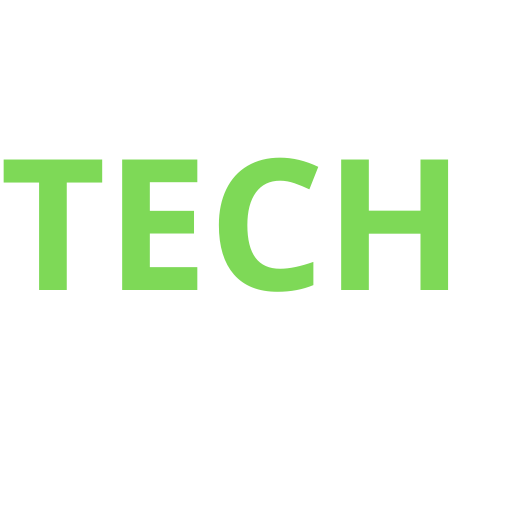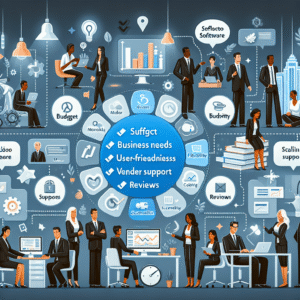-
Table of Contents
Essential Productivity Software Tools You Can’t Live Without
In today’s fast-paced digital world, productivity is paramount, and having the right software tools at your disposal can make all the difference. As technology continues to evolve, so too does the array of software designed to enhance efficiency and streamline tasks. Among the myriad options available, there are ten essential productivity software tools that have become indispensable for professionals across various fields. These tools not only facilitate seamless workflow but also foster collaboration and innovation.
To begin with, Microsoft Office Suite remains a cornerstone of productivity software. With its comprehensive range of applications, including Word, Excel, and PowerPoint, it provides users with the ability to create, edit, and share documents, spreadsheets, and presentations effortlessly. Its integration with cloud services ensures that work is accessible from anywhere, making it a vital tool for remote and in-office work alike. Transitioning from traditional office tasks, we find that project management software like Trello and Asana has revolutionized the way teams collaborate. These platforms offer intuitive interfaces that allow users to organize tasks, set deadlines, and track progress in real-time. By providing a visual overview of projects, they enable teams to stay aligned and focused on their goals.
In addition to project management, communication is a critical component of productivity. Slack has emerged as a leading communication tool, offering a platform where teams can communicate in real-time through channels, direct messages, and video calls. Its integration with other software tools further enhances its utility, allowing for a seamless flow of information. Similarly, Zoom has become synonymous with virtual meetings, providing a reliable and user-friendly platform for video conferencing. Its features, such as screen sharing and breakout rooms, facilitate effective communication and collaboration, regardless of geographical location.
Moreover, cloud storage solutions like Google Drive and Dropbox have transformed the way we store and share files. These platforms offer secure and scalable storage options, ensuring that important documents are accessible and protected. Their collaborative features allow multiple users to work on the same document simultaneously, fostering a more dynamic and interactive work environment. As we delve deeper into the realm of productivity, Evernote stands out as a versatile note-taking application. It allows users to capture ideas, organize notes, and manage tasks efficiently. Its ability to sync across devices ensures that information is always at your fingertips, making it an invaluable tool for both personal and professional use.
Furthermore, automation tools such as Zapier have become essential for streamlining repetitive tasks. By connecting different applications and automating workflows, Zapier saves time and reduces the potential for human error. This allows professionals to focus on more strategic and creative aspects of their work. In the realm of design, Adobe Creative Cloud offers a suite of applications that cater to various creative needs. From graphic design to video editing, its comprehensive tools empower users to bring their visions to life with precision and creativity.
Finally, cybersecurity cannot be overlooked in the discussion of productivity tools. Software like Norton and McAfee provide robust protection against cyber threats, ensuring that your digital workspace remains secure. By safeguarding sensitive information, these tools allow professionals to work with peace of mind. In conclusion, the right software tools are integral to enhancing productivity and efficiency. By leveraging these essential tools, professionals can navigate the complexities of the modern workplace with confidence and ease.
Must-Have Creative Software Tools For Every Professional

In the ever-evolving landscape of professional creativity, the right software tools can significantly enhance productivity and innovation. As professionals strive to stay ahead in their respective fields, having access to the most effective creative software is indispensable. These tools not only streamline workflows but also unlock new possibilities for artistic expression and technical precision. Among the myriad options available, ten software tools stand out as essential for any creative professional.
Firstly, Adobe Creative Cloud remains a cornerstone for designers, photographers, and videographers. With its comprehensive suite of applications, including Photoshop, Illustrator, and Premiere Pro, Adobe Creative Cloud offers unparalleled versatility. These tools enable professionals to edit images, create vector graphics, and produce high-quality videos with ease. The seamless integration between applications further enhances the user experience, allowing for a fluid transition from one creative task to another.
In addition to Adobe’s offerings, CorelDRAW Graphics Suite is another powerful tool for graphic designers. Known for its intuitive interface and robust feature set, CorelDRAW provides advanced vector illustration capabilities. It is particularly favored for its precision and control, making it ideal for creating detailed designs and layouts. The suite also includes tools for photo editing and typography, ensuring a comprehensive solution for various design needs.
For those in the field of digital painting and illustration, Procreate has become a go-to application. Exclusively available on iPad, Procreate offers a natural drawing experience with its extensive brush library and responsive interface. Its ability to handle large canvases and high-resolution artwork makes it a favorite among illustrators and concept artists. The app’s continuous updates and community-driven development further enhance its appeal.
Transitioning to the realm of 3D modeling and animation, Autodesk Maya is a leading software tool. Renowned for its powerful modeling, simulation, and rendering capabilities, Maya is widely used in the film, television, and gaming industries. Its comprehensive toolset allows for the creation of complex characters and environments, while its scripting capabilities enable customization and automation of repetitive tasks.
Similarly, Blender has gained popularity as a versatile open-source alternative for 3D creation. With its robust features for modeling, sculpting, and animation, Blender offers a cost-effective solution without compromising on quality. Its active community and frequent updates ensure that it remains at the forefront of 3D technology.
For video editing, Final Cut Pro X is a preferred choice among Mac users. Known for its magnetic timeline and advanced editing features, Final Cut Pro X provides a streamlined workflow for video production. Its support for 360-degree video editing and HDR content further expands its capabilities, catering to the demands of modern video projects.
In the realm of music production, Ableton Live stands out for its intuitive interface and real-time performance capabilities. Favored by musicians and producers, Ableton Live offers a unique approach to music creation with its session view and extensive library of sounds and effects. Its integration with hardware controllers and support for third-party plugins make it a versatile tool for live performances and studio work alike.
For architects and interior designers, SketchUp is an indispensable tool for 3D modeling. Known for its ease of use and precision, SketchUp allows professionals to create detailed architectural designs and visualizations. Its extensive library of pre-built models and integration with rendering plugins further enhance its functionality.
Finally, for project management and collaboration, Trello offers a visual approach to organizing tasks and workflows. With its intuitive board and card system, Trello enables teams to track progress and manage projects efficiently. Its integration with other tools and platforms ensures seamless communication and collaboration across teams.
In conclusion, these ten software tools represent the pinnacle of creative technology, each offering unique features and capabilities tailored to the needs of professionals across various industries. By leveraging these tools, creative professionals can enhance their productivity, streamline their workflows, and push the boundaries of their craft.
Top 10 Software Tools For Streamlining Your Workflow
In today’s fast-paced digital world, efficiency and productivity are paramount, and the right software tools can make all the difference in streamlining your workflow. As technology continues to evolve, professionals across various industries are constantly seeking tools that not only enhance their productivity but also simplify complex tasks. Among the myriad of options available, there are ten software tools that stand out as indispensable for anyone looking to optimize their workflow.
To begin with, project management software is essential for organizing tasks and ensuring that projects are completed on time. Tools like Trello and Asana offer intuitive interfaces that allow users to create boards, lists, and cards to manage tasks effectively. These platforms facilitate collaboration by enabling team members to assign tasks, set deadlines, and track progress in real-time. As a result, teams can maintain transparency and accountability, which are crucial for successful project execution.
In addition to project management, communication tools play a vital role in streamlining workflow. Slack, for instance, has revolutionized the way teams communicate by providing a centralized platform for messaging, file sharing, and video calls. Its integration capabilities with other software tools further enhance its utility, allowing users to access various services without leaving the platform. This seamless communication fosters a more connected and efficient work environment.
Moreover, document management is another critical aspect of workflow optimization. Google Workspace, formerly known as G Suite, offers a suite of cloud-based productivity tools that include Google Docs, Sheets, and Slides. These tools enable real-time collaboration, allowing multiple users to work on the same document simultaneously. The cloud-based nature of Google Workspace ensures that documents are accessible from anywhere, at any time, thus eliminating the constraints of traditional office setups.
Furthermore, time management tools such as Toggl and RescueTime are invaluable for professionals seeking to maximize their productivity. Toggl provides a simple yet effective way to track time spent on various tasks, offering insights into how time is allocated throughout the day. On the other hand, RescueTime runs in the background, monitoring computer usage to provide detailed reports on productivity patterns. By identifying time-wasting activities, users can make informed decisions to improve their time management skills.
In the realm of creative work, design tools like Adobe Creative Cloud are indispensable for graphic designers, photographers, and video editors. With applications such as Photoshop, Illustrator, and Premiere Pro, Adobe Creative Cloud offers a comprehensive suite of tools that cater to a wide range of creative needs. The integration between these applications allows for a seamless workflow, enabling creatives to produce high-quality work efficiently.
Additionally, automation tools like Zapier and IFTTT (If This Then That) are game-changers for those looking to automate repetitive tasks. These platforms connect different apps and services, allowing users to create automated workflows known as “Zaps” or “Applets.” By automating routine tasks, professionals can focus on more strategic activities, thereby enhancing overall productivity.
Lastly, cybersecurity tools are crucial for protecting sensitive information and maintaining the integrity of digital assets. Software like LastPass and Norton Security provide robust solutions for password management and threat protection, respectively. By safeguarding data, these tools ensure that professionals can work with peace of mind, knowing that their information is secure.
In conclusion, the right software tools can significantly enhance productivity and streamline workflow across various domains. By leveraging project management, communication, document management, time management, design, automation, and cybersecurity tools, professionals can optimize their work processes and achieve greater efficiency. As technology continues to advance, staying updated with the latest software tools is essential for maintaining a competitive edge in today’s dynamic work environment.
Conclusion
In today’s digital age, software tools have become indispensable for enhancing productivity, creativity, and efficiency. The top 10 software tools you can’t live without typically include a mix of applications that cater to various needs, such as communication, organization, design, and security. Essential tools often feature productivity suites like Microsoft Office or Google Workspace, which provide comprehensive solutions for document creation, spreadsheets, and presentations. Communication platforms like Slack or Zoom are crucial for seamless collaboration and remote work. For creative tasks, Adobe Creative Cloud offers industry-standard applications for design and multimedia. Project management tools like Trello or Asana help in organizing tasks and workflows efficiently. Cloud storage solutions such as Dropbox or Google Drive ensure data accessibility and backup. Security software, including antivirus programs like Norton or Bitdefender, is vital for protecting digital assets. Password managers like LastPass or 1Password enhance security by managing credentials. Finally, web browsers like Google Chrome or Mozilla Firefox are essential for internet access and research. These tools collectively form a robust digital toolkit that supports both personal and professional endeavors, making them indispensable in the modern world.



